Production
| How is a harness produced? | |
|---|---|
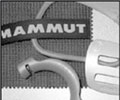
|
A climbing harness has up to 45 components. The perfect workmanship and the pattern belong to the secret recipe for success of a harness. All Mammut climbing harnesses are completely hand finished. |
| 1. Webbing | |

|
On special narrow band robots the highly technical constructions for the webbings are made. With computer-operated yarn-tension control the high quality is guaranteed. |
| 2. Punching of individual parts | |
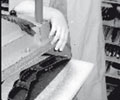
|
On a heavy punching machine all pads of a harness are cleanly and precisely cut. |
| 3. Edging of the pads | |
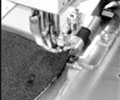
|
The next step of the process is the edging of the pads with a eudermic band on a special machine. |
| 4. Computer-operated sewing machines | |
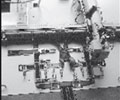
|
All safety relevant joints of climbing harnesses are made on computer-operated sewing machines. Though the amount of stitches, the yarn-tension as well as the pattern are precisely controlled. |
| 5. Sewing in of the buckles | |

|
After the webbing was cut on the exact length, the closure buckle is sewn in manually. |
| 6. Sewing of the components | |

|
With special stitching machines and durable stitching yarns the components of the harness are sewn manually. Features as the gear loops and buckles are added. |
| 7. Quality control of the stitching | |
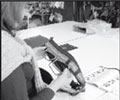
|
Quality testers check the thread tension, stitch quality and the correct fit of all features. If one of these does not fulfill the strict test criteria, the harness is rejected. |
| 8. Check of the EN standard | |
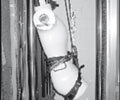
|
On the Mammut test center the production is controlled: of each production run a random sample of certain harnesses are checked to meet the EN standard 12277. |
| 9. Packaging and labeling | |
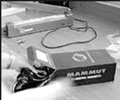
|
After the final control, the packaging and labeling kicks the harness off onto their travels – we have given all of our knowledge and technical passion to take with them on the way. |






